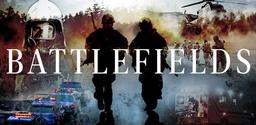“Toxic” leaders are bad, but they’re not the worst kind of leaders out there. The absolute worst leaders are “radioactive.”
Oh, you didn’t know that there was a difference? Well, let me explain...
* * *
I’ve been blessed over the course of my career to know many excellent leaders. During my time as an infantry platoon leader in the 101st Airborne Division, I had my first platoon sergeant, Sergeant First Class Ellery Edwards, and Captain Brett Jenkinson, my company commander. Years later, there were General Stanley McChrystal and Admiral William McRaven from my time in Joint Special Operations Command. After that were Colonels Cindy Jebb, Suzanne Nielsen, Scott Halstead, and Pat Howell from my time teaching at West Point. And there are, of course, too many others to mention.




